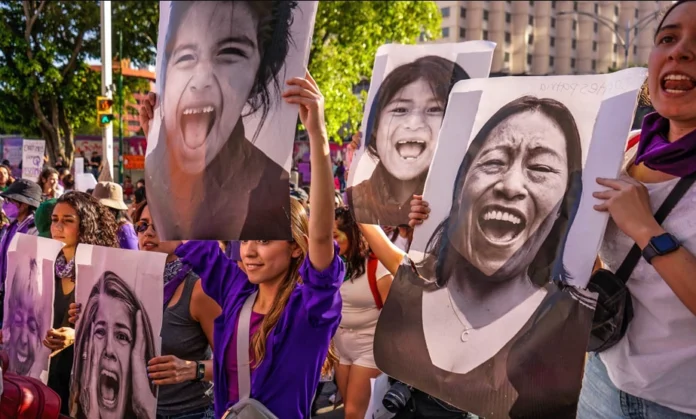
In a new commemoration of International Women’s Day, and like every day, it is important to repeat that the international community continues to fail millions of women and girls.
Although many countries have signed and ratified the UN Committee on the Elimination of Discrimination against Women, the world still faces significant challenges to achieve the fifth Sustainable Development Goal (SDG) on gender equality and the empowerment of all women and girls. Currently, 1 in 10 women live in extreme poverty. If current trends continue, by 2030, it is estimated that 8% of the world’s population of women (342.4 million women and girls) will still live on less than US$ 2.15 per day.
These aspects emerging from the report “Progress on the Sustainable Development Goals: the Gender Snapshot 2023”, presented by UN Women and the United Nations Department of Economic and Social Affairs (UN-DESA), reveal a disturbing picture. This is not only because we are at the end of the road toward the deadline set in the 2030 Agenda to achieve these goals, but mainly because these goals are even further away when viewed from a gender perspective. United Nations forecasts indicate that at the current rate, millions of girls and women will still be living in extreme poverty in 2030.
Gender inequality in Latin America
Gender inequalities persist in Latin America in several dimensions including education, employment, access to quality health care, representation, and political participation. Despite progress in some areas, Oxfam’s recently published Inequality Inc. report indicates that women are vastly overrepresented in lower-paid and more precarious jobs, and face a persistently high gender wage gap. In addition, violence against women remains a widespread problem, with high rates of gender-based violence reported across the region.
We also know that extreme poverty and lack of economic opportunity are drivers of forced migration in Latin America. For many women and girls, conditions in their home country are intolerable and leave them with no reasonable alternative but to flee the country due to a direct or potential threat of physical insecurity, loss of housing and livelihoods, or because of their ability to care for themselves and their families is radically undermined.
According to UNHCR, there are 73.5 million migrants in the Americas and 22.1 million are forcibly displaced, in need of international protection or humanitarian assistance. Of these people, it is estimated that 46% — almost 10 million — are women, adolescents, and girls.
In this context, we also know that a distinctive gender feature is the exodus of thousands of pregnant Venezuelan women, fleeing for reasons of necessity, including the fear of losing their babies or their own lives if they stay to give birth in their own country. According to Amnesty International (2018), maternal mortality increased by 65% in Venezuela between 2015 and 2016. A 25-year setback due to a lack of medicines such as anticoagulants, analgesics, and antibiotics and a lack of basic medical tools, equipment, and personnel. That context drove many women to flee. Since then, almost 8 million migrants have left Venezuela. Half of them are women and girls.
In a study involving interviews with 2,012 Venezuelan migrant women and adolescent girls in the cities of Manaus and Boa Vista, Brazil, 10% stated having been pregnant during the crossing, 54% highlighted reasons for migration related to difficulties in obtaining food; 38% accentuated reasons related to access to health treatment and 28% reasons for gender-based violence, while a similar percentage highlighted the work search.
In Central America, extortion and gender-based violence have meant that many women and mothers with their children have had no choice but to leave. During transit and in host communities, women, adolescents, and girls often use unsafe routes where their rights are conditioned by the lack of basic services such as health, sexual and reproductive health, education, and care.
But border crossings can also be biased due to high militarization and lack of institutional presence that increase situations of violence, human trafficking for sexual exploitation, violence, and forced disappearance. For example, Doctors Without Borders (2020) reported that on the southern border of Mexico, where migrants from Central and South America travel on foot to avoid border controls, police, and gangs, often in collaboration with each other, were reported as perpetrators of gender-based abuses.
These challenges have been heightened recently with hundreds of thousands of people crossing the Darien Gap into Panama. Between January 1 and December 31, 2023, more than 520,000 people crossed The Darien, one of the most dangerous crossings in the world. Border crossers have reported being victims of robbery, assault, and sexual violence. Recently, Doctors Without Borders reported having treated more than 600 cases of sexual violence in 2023, most of these violent acts are against women and girls.
Who cares?
The challenges addressed here require comprehensive strategies that address structural barriers to gender equality, including legal reforms, specific policies and programs for integration and regularization of migrants, and efforts to challenge gender norms and stereotypes that affect the autonomy and lives in dignity of many women and girls. This recognition also requires collaboration between governments, civil society organizations, the private sector, and international agencies to implement effective and gender-sensitive solutions.
Nonetheless, it is also worthwhile for those who commemorate International Women’s Day to reconsider the moral responsibility of the many of us who actively collaborate with the daily reproduction and subsistence of normalized and tolerated conditions of inequality.
*Translated by Janaína Ruviaro da Silva from the original in Spanish.


